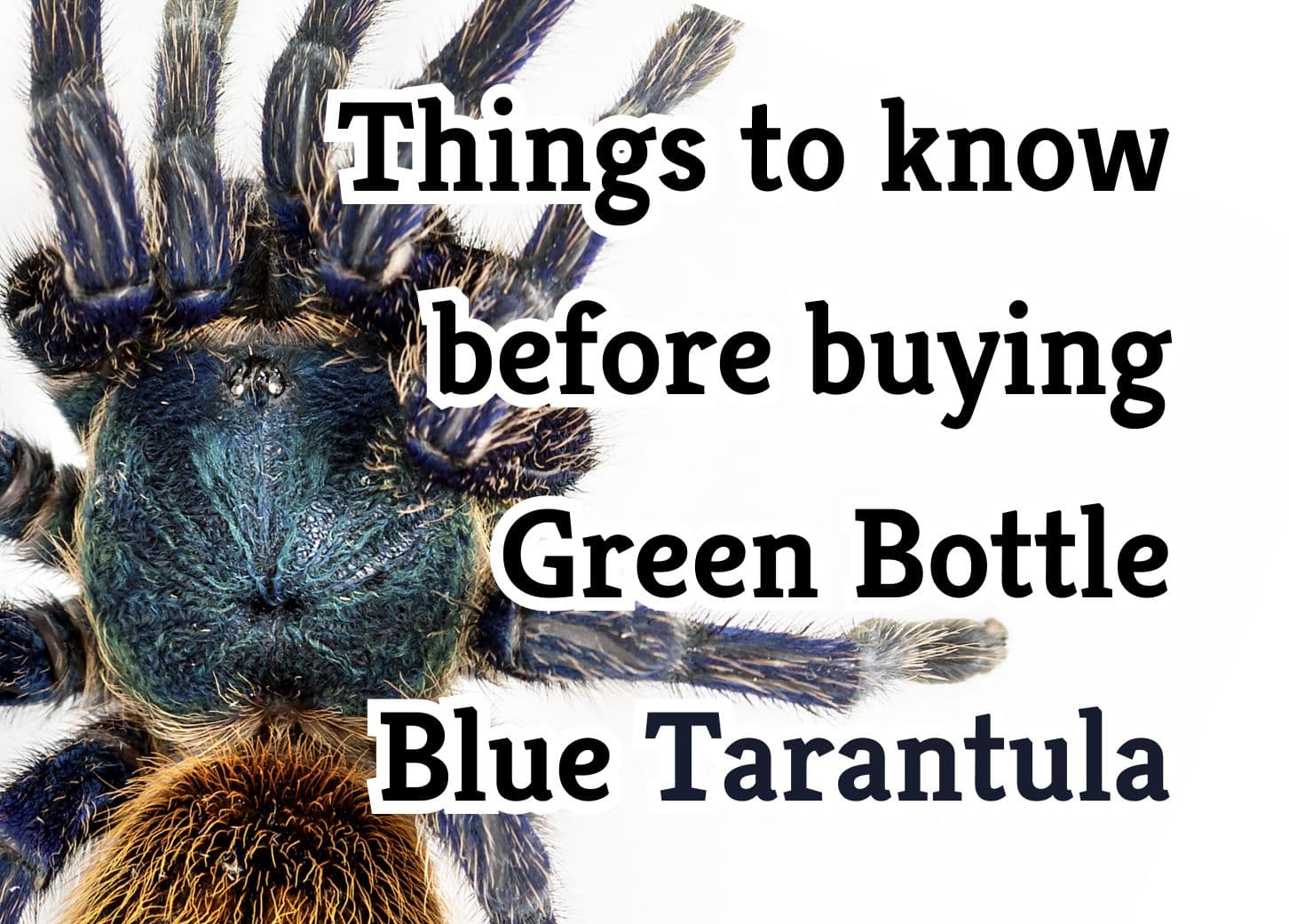Essential Facts About the Green Bottle Blue Tarantula

Thinking of adding a Green Bottle Blue Tarantula (Chromatopelma cyaneopubescens) to your home? You're in for a treat. These spiders are not only drop-dead gorgeous — with their electric blue legs, greenish carapace, and fiery orange abdomen — but they’re also one of the best tarantulas for beginners.
We’ve kept these ourselves, and honestly, they’re fascinating to watch and surprisingly low-maintenance, once you know what you're doing. Here’s what you really need to know before bringing one home:
Why Green Bottle Blues Make Great Pets
- Stunning looks: Their color combo looks almost unreal, like a little Halloween jewel crawling around a display case.
- Great for beginners: As New World tarantulas (native to Venezuela), they’re much less aggressive and have milder venom than Old World species.
- Low-maintenance: They don’t need constant attention, and they’re content in a well-set-up enclosure.
What You Need to Know Before Buying
- Cost: Expect to pay anywhere from $50 to $300 depending on age. Slings (spiderlings) are cheaper, but they’ll require more care and patience to raise.
- Lifespan: Females can live 12–14 years, while males live closer to 8–10. Most people prefer females for this reason.
- Size: Adults reach up to 6 inches in leg span. Slings are tiny—about 1.5 inches.
- Temperament: They’re generally calm and will choose to hide rather than bite. If they feel really threatened, they might flick irritating hairs (called urticating hairs), which can cause itching—so keep them away from your face and always wash your hands after handling.
- Venom: Mild for humans unless you're allergic (like bee sting-level). If you’re allergic to bee venom, it’s best to avoid any tarantula, just to be safe.
- Handling: They can be handled, but it’s not necessary and can stress them out. If you do handle them, be gentle and confident — and never from a height. We prefer to just admire them in their habitat.
Habitat Setup Tips
- Enclosure size: Something around 18x18x18 inches works well. They’re semi-arboreal, so they like both ground and vertical space.
- Substrate: At least 4 inches of a mix like coconut fiber, dirt, and vermiculite for burrowing.
- Decor: Add branches, rocks, and hideouts. They love webbing and climbing.
- Temperature: Keep it between 75–85°F (24–29°C) with a heat mat or ceramic heater if needed. Always monitor with a thermometer.
- Humidity: Aim for 60–70%. A shallow water bowl helps, and occasional misting is fine. Use a hygrometer to keep things on track.
- Escape-proofing: They’re little Houdinis, so secure the lid well—ventilation holes should be tiny.
Feeding and Care
- Diet: Feed live prey like crickets, roaches, or mealworms—nothing bigger than the tarantula’s abdomen. Never feed during molting or right after.
- Feeding schedule: Once or twice a week is enough.
- Water: Always provide fresh water in a shallow dish. Swap it daily, especially for slings (young tarantulas) that could drown in deeper bowls.
- Molting: Young tarantulas molt monthly; adults about once a year. You’ll know it’s coming when they stop eating, hide more, and their abdomen looks swollen. Don’t disturb or feed them during this time. Wait a few days after molting to offer food again.
Health and Safety
- Common issues: Trouble molting and oral infections (like nematodes) are rare but serious. If you see white stuff around their mouth or notice molting issues, get to an exotic vet ASAP.
- Vet prep: Find a vet experienced with spiders before you need one. It’s not always easy to find the right help last minute.
- Housing alone: Don’t cohabitate tarantulas — they’re solitary and will likely eat each other, especially during molting.
Breeding? Think Twice
Breeding Green Bottle Blues is tricky. Females often eat the males, and even the egg sac isn’t always safe. If you’re curious, research extensively and be prepared for a hands-on (and slightly risky) process.
Final Thoughts
If you’re looking for a low-fuss, high-drama pet (in terms of looks, not behavior), the Green Bottle Blue is a fantastic choice. They’re hardy, beautiful, and surprisingly chill. Just respect their space, set up their habitat properly, and enjoy watching them go about their eight-legged lives.
Have questions? We’ve learned a lot by trial and error, so don’t hesitate to reach out — we’re always happy to help fellow spider lovers get started on the right foot (or eight).